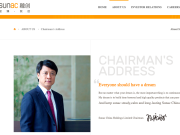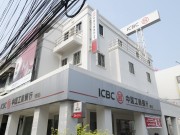Demystifying Private Placement Life Insurance (PPLI)

This is a commentary by Kevin Foo, who is Head of Private Wealth Planning & Insurance for Noah Singapore focusing on Chinese HNWIs. He is a Chartered Financial Consultant (ChFC®/S), Associate Wealth Planner (AWP™) and Chartered Life Underwriter (CLU®/S) and qualified with Advance Trust Certificate from Singapore’s Wealth Management Institute(WMI), Asia’s Centre of Excellence for wealth and asset management education and research.
There is much talk about Private Placement Life Insurance (PPLI) recently, and it is common for client to want to know the key differences and advantages since the benefits can be quite similar to each other. I can say that no solution is perfect, and it is great if client can find practitioners whose platform consist of both options, as specialist from each specific industry tend to skew towards one solution due to familiarity.
In my opinion, there is merit in marrying both solutions together, if the client AUM permits and meet the client’s wealth planning objective(s).
What is PPLI?
In my own words, Private Placement is similar to a unit linked life insurance structure that allows HNWIs’ assets to be the underlying asset as premium-in-kind. In such structure itself, it has a few advantages compared to a Trust Structure, where a Life insurance structure is a globally recognised structure and when structured properly, enjoy tax deferral as part of legacy planning for clients.
Who will it be suitable for?
HNWIs who are looking for a tax efficient structure that is both portable and globally recognised to benefit beneficiaries.
As many of us are already aware, HNWIs nowadays are global citizens with their family living or working overseas. PPLI is a structure that is tax efficient in passing on their global asset to their beneficiaries as a life insurance death proceed pay out. It can allow policy owner to accumulate global asset in a tax deferral manner.
For many of our clients who owns an offshore entity, their offshore entity needs to comply with the definition of economic substance as part of CRS (Common Reporting Standard). Failing to meet the requirement, the offshore entity will be recognised as a Controlled Foreign Company (CFC). Each country has its own CFC laws, but most are similar in that they tend to target individuals, who has the controlling interest in the offshore company entity.
Once recognised as a CFC, the offshore entity will not be recognised as the local tax residency at the registered entity jurisdiction. The tax residency status of the major shareholder of that offshore entity will be considered instead, defeating client’s planning objective.
PPLI structured properly, will not encounter such issue.
How PPLI work for your client?
There are 2 options for PPLI, one structure with jumbo life insurance coverage, the other is to provide little. To know which option is more suited, we must first recognise the changing trend of HNWIs.
The Rise of Endowment Investment Model
US Endowment Funds have consistently achieved superior investment returns especially in the case for Harvard and Yale. If you had invested in Yale endowment fund for the last 30 years, your return would have been more than 34 times compared to an equities/bond portfolio of about 19.5 times1. In such endowment investment strategy, client gives up liquidity of their portfolio for a more superior return.
And this can be witnessed among our HNWIs client’s portfolio each consist significant amount of alternate asset class. In a KKR research2, the UHNW invested up to 46% and the HNW about 22%, and this trend is poised to grow into a market of US$6 trillion by 20253.
PPLI providing liquidity & amplification value of estate planning
By choosing to build up a portfolio of illiquid assets, itself bring along another set of wealth planning challenge. Unlike Universities, our clients’ beneficiaries will require immediate income upon the passing on of the matriarch or patriarch. With a sizeable amount of illiquid assets, the lack of liquidity impacts maintenance of beneficiaries’ desired lifestyle.
As mentioned earlier, PPLI can be structured with high insurance coverage, and this can help solve some immediate issues in legacy planning. With raising trend of investing into illiquid asset, a PPLI structure provides immediate cash out to help solve liquidity issue of such estate.
By using life insurance component of PPLI to amplify value of the estate has proven to be a benefit that client can take advantage of, which a typical Trust is unable to provide. Now with a larger value of estate, client is able to help maintain harmony within family members, by allocating an equal value out to each family member.
With an amplified estate, HNW do not need to break up its business entity. Client can now have the option to pass on the controlling stake of business to the proper person who can continue to run and grow the legacy of the business, while non-interested parties can inherit an equal value.
When client chooses to structure it with Trust, the cash pay-out component is also a great way to provide funding for the Trust structure, while PPLI structure provide the smooth and quick transition of ill-liquid asset component to nominated beneficiaries without probate.
Comparing with the traditional Universal life (UL) or Index Universal life (IUL), there is no need for high cash out front as premium for such jumbo coverage.
What are to be considered for placing PPLI?
Similar to settling assets into Trust, transferring assets into PPLI structure has similar consideration, of fees and tax. And it is advisable to work with a qualified tax advisor, especially so, when your clients are in high tax jurisdiction.
Domicile, Resident & Nationality
Before advising, it is important to know client’s domiciliation, tax residency status and nationality. Understanding the differences is important because we will need to have tax consideration when transferring asset into PPLI. The same consideration can be extended to beneficiaries as well.
Ownership of policy
Unlike Trust, there is an option for a Company, Trust or even client to own the PPLI policy directly. And for managing of the underlying asset, a Limited Power of Attorney (LPOA) can be given to policy owner (Company, Trust or Client) or a licensed asset manager.
Taking advantage of Insurer’s place of registration
Just like how clients will consider the registered Trustee jurisdiction to take advantage of the tax & legal regulation, we can extend the same consideration for PPLI provider on their place of registration.
As the assets are premium-in-kind transferred to the insurer, the registered jurisdiction of insurer will have impact on the assets transferred. Some of the questions that we want insight on will be, the general understanding of how the insurance industry is being governed in that jurisdiction, the amount of beneficial tax treaties within the registered jurisdiction that PPLI can leveraged on and what the legal considerations on management of underlying assets and the type of assets being accepted.
Example: Client who have high dividends income from US may want such assets to be structured with a PPLI provider that is in a jurisdiction with Double Taxation Agreement (DTA) with the U.S to reduce the requirement of withholding tax.
Type Of Asset
The general rule is that, as long as the assets can be structured into a fund or company structure, PPLI will be able to accept them4. All insurance companies are able to accept a limited number of shares for Operating companies, which Trustees in most cases are unwillingly to accept.
Bankable assets are the most direct and acceptable by all and they are some PPLI providers who are more readily to accept illiquid assets such as PE/VC Hedge funds compared to others.
Conclusion
PPLI seems like a magic bullet to some.
However, there is no such thing as a perfect financial product. PPLI lacks flexibility in passing on assets compared to Trust, as it allows for flexible disbursement of assets from one generation to the next.
PPLI death pay out of cash and underlying assets is one time off, so for large pay out, it will make sense for it to be administered via Trust, rather direct as a PPLI
For PPLI, many will focus on it as an asset holding structure and did not take full advantage of its capability to provide life insurance coverage. With life insurance coverage, PPLI can be extended to help clients amplify value of their estate, provide liquidity to their estate, free up cash as insurance premium utilising it for investment planning instead and finally, it can also be help client maintain harmony of their family through estate equalisation.
As the wise saying:“The razor blade is sharp but can’t chop a tree; and the axe is strong but can’t cut the hair.”
We should take advantage of the strength of both solutions.
Sometimes, it makes sense for PPLI to be a stand-alone, but in most cases, the maximum advantage PPLI can be captured if it is to be structured together with Trust/ Foundation, giving your clients the best of both worlds.

Author Profile:
Kevin Foo is Head of Private Wealth Planning & Insurance for Noah Singapore focussing on Chinese HNWIs. He is a Chartered Financial Consultant (ChFC®/S), Associate Wealth Planner (AWP™) and Chartered Life Underwriter (CLU®/S) and qualified with Advance Trust Certificate from Singapore’s Wealth Management Institute(WMI), Asia’s Centre of Excellence for wealth and asset management education and research. He can be reached here: Linkedin
1 That’s why I chose Yale Endowment Investment Model
2 KKR Insights
3 Riding the wave of alternative income amongst HNWIs
4 Each insurer has their due asset acceptance process & criteria including their AML and KYC of client
Sign Up / Register
Caproasia Users
- Manage $20 million to $3 billion of assets
- Invest $3 million to $300 million
- Advise institutions, billionaires, UHNWs & HNWs
Caproasia Platforms | 11,000 Investors & Advisors
- Caproasia.com
- Caproasia Access
- Caproasia Events
- The Financial Centre | Find Services
- Membership
- Family Office Circle
- Professional Investor Circle
- Investor Relations Network
Monthly Roundtable & Networking
Family Office Programs
The 2025 Investment Day
- March - Hong Kong
- March - Singapore
- July - Hong Kong
- July - Singapore
- Sept- Hong Kong
- Sept - Singapore
- Oct- Hong Kong
- Nov - Singapore
- Visit: The Investment Day | Register: Click here
Caproasia Summits
- The Institutional Investor Summit
- The Investment / Alternatives Summit
- The Private Wealth Summit
- The Family Office Summit
- The CEO & Entrepreneur Summit
- The Capital Markets Summit
- The ESG / Sustainable Investment Summit


































